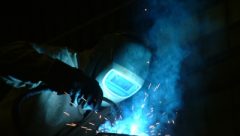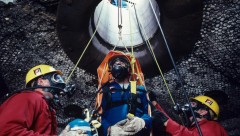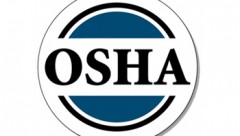5 Steps to Successful Exposure Assessments By Jerome E. Spear, CSP, CIH The better our understanding of exposures and the risks they pose, the more assurance we have that we are controlling the most important (highest risk) exposures first. Control efforts (such as engineering, work practice, or personal protective equipment) are often costly to implement…
Category: Top posts
Category for Top Posts
The Statistical Abstracts of the United States, 105th edition, estimates that 5 to 10 million workers are exposed to heat illness annually. Heat illnesses (such as heat stroke, heat exhaustion, and heat cramps) are caused by hot environments and are preventable occupational health hazards. Heat illness results when the body is out of heat balance.…
The National Weather Service asserts that excessive heat was the number one weather-related killer, causing more fatalities per year than floods, lightning, tornadoes, hurricanes, winter storms, and extreme cold. Evidence from the Centers for Disease Control, American Red Cross, and the National Institute of Occupational Safety and Health (NIOSH) show that hot environmental temperatures cause…
By Jerome E. Spear, CSP, CIH Manganese is found in carbon steel and is also used in steel alloys. Small amounts of manganese are added to steel to improve the workability of steel at high temperatures. There is less than 1.65% by weight of manganese in carbon steel; whereas, special steels may have higher concentrations…
By Jerome E. Spear, CSP, CIH A construction foreman died from asphyxiation after entering a newly constructed manhole. Four construction workers were working in an inactive sewer system on a job site that was unoccupied for over a week. A few minutes after they started working, the crew noticed that the foreman was missing and…
By Jerome E. Spear, CSP, CIH Safety committees are a common way to get employees involved in the safety process. Often, safety committees are put together to assist with inspections and audits, review incidents and injuries, solicit suggestions to reduce injuries and illnesses, and/or conduct behavior observations. But, is the committee achieving its fullest potential?…
Experience, Education, Licenses, & Certifications Experience Construction Gap Analysis – Performed a construction gap analysis for a Fortune 500 biotech firm with sites located in California, Washington, Colorado, Rhode Island, and Puerto Rico. Contractor Safety Assessment – Performed contractor safety assessment during the painting of the containment dome of a nuclear operating company located…
Information about the services that we offer and the industries that we service. Specialties: Expert witness and litigation support Incident investigations and root cause analysis Injury and illness prevention Safety inspections and audits Loss control surveys Industrial hygiene Hazard analysis and control Employee/workplace safety OSHA compliance Air quality, sampling and testing Chemical exposure and control…









